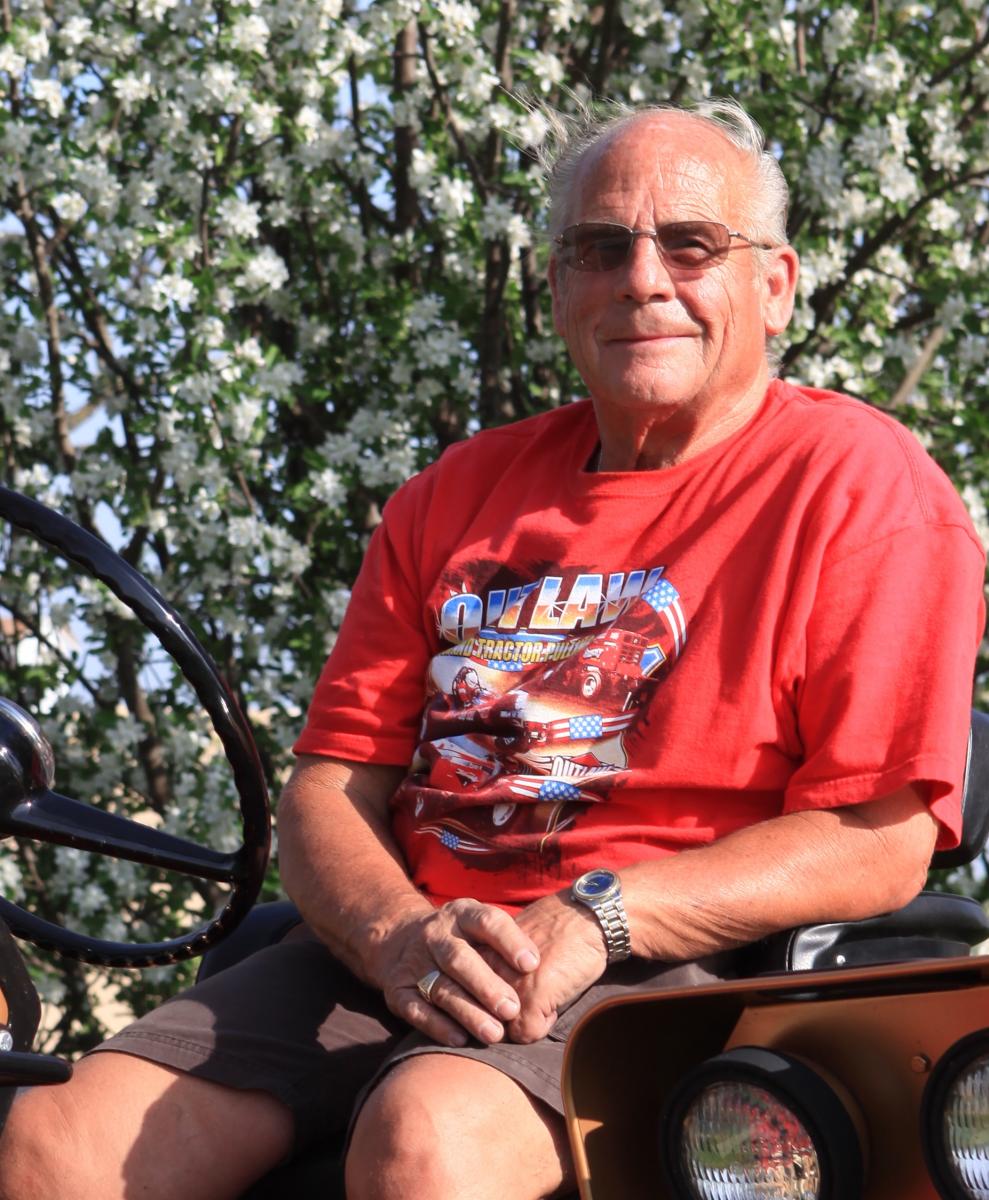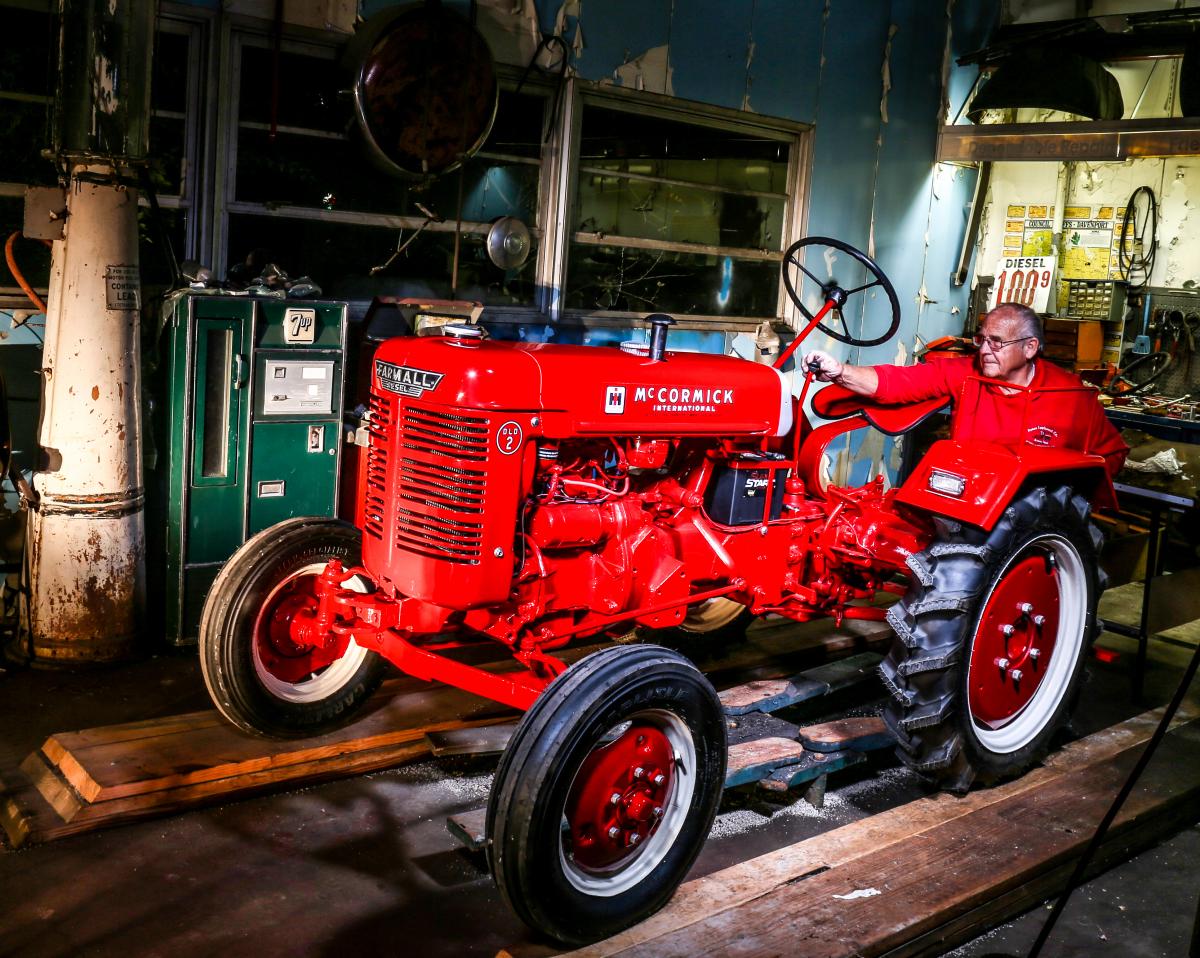1955 Farmall DLD2
A German-Built Two-Cylinder

Photographer and author Lee Klancher shot the March image for the Farmall Calendar 2017. Here he shares some insights into the process by which he brings these impressive farm machines to life.
ABOUT THE TRACTOR
The International Harvester Company (IHC) was founded in 1902 in a massive merger that created the world’s largest agricultural equipment conglomerate. Despite later facing an anti-trust suit that they lost in 1917, the company used their near-monopoly to dominate the market for 50 years. Increasing their presence around the globe was part of the company’s growth strategy, and IHC had offices and sales presence in dozens of countries when they were founded.
The German market was one IHC pursued with vigor, and the International Harvester Company GmB was founded in Germany in 1908. A factory was constructed at Neuss am Rhein and began building implements in 1911. Tractors were first built there in 1933.
 The German DLD2 was part of a new line introduced in 1953 that featured diesel engines, a critical component in the German market. The line had three models—the DLD2, DED3, and DGD4. This basic platform would be refined into a new line introduced in 1956, and those tractors stayed in production until 1966.
The German DLD2 was part of a new line introduced in 1953 that featured diesel engines, a critical component in the German market. The line had three models—the DLD2, DED3, and DGD4. This basic platform would be refined into a new line introduced in 1956, and those tractors stayed in production until 1966.
This beautifully restored example is owned by Jerry Mez, the owner and operator of the Farmall-Land Museum in Avoca, Iowa. This photograph was taken in a small defunct gas station located near the museum, and Mez can be seen at the workbench. This model was built to be exported outside of Germany. Mez purchased the tractor from an owner in the Netherlands. The prominence of the Farmall branding on the DLD2 is interesting, as European machines used the McCormick brand for many years.
BEHIND THE PHOTOGRAPH
The calendar's image is one of my favorites from the past few years, for a number of reasons. One is that the setting is the kind I love. Jerry and I spent an afternoon knocking around Avoca, looking for a setting for an evening shoot. After scouting a couple of spots downtown--including a large drive-through grain bin--we found this gas station right next door to the museum. The place had long since been abandoned, but all the old stuff used by the owner was left inside. The garage had an old muscle car in it, and we would have to roll that out in order to make space to photograph the DLD2.
Jerry called the owner, and they were fine with it, so he and I pushed that old car out into the street. The car hadn't moved in years, and it didn't push easily! Once we had it out, we rolled in the little DLD and then went next door for a plate full of fried fish while the sun went down. I went back, and went to work getting the lighting right. That took several hours, mainly because I wanted strong light on the tractor and not much on the funky old garage, and also because the space was so tight in the garage! I had lightstands jammed up in corners, tipped and cranked and tortured into place. I also had a tie down holding one light stand in place!

In the end, the light was on the tractor perfectly, and that red paint glowed beautifully. The best part was I was able to get Jerry into the frame. I've worked with Jerry for many years now--he was one of the people I got to know when I was just starting Octane Press--and I really enjoy working with him. We also always seem to end up in some crazy situation--we did a shoot out at a historic farm near his museum, and the wind was blowing like crazy and a freak late cold-snap meant it was cold as hell! My dad happened to be there (long story) and he and Jerry stood out in the wind holding giant umbrellas at five in the morning while I tried to light up a farm house. Jerry was wearing shorts and about froze to death in that wind.
The shoot was kind of rolling disaster, with freezing temps and big umbrellas flopping around at 5 am, but we used the shot and laugh about it today.

But I digress, the gas station shoot went awesome. It took quite a while to get the light perfect, but the result was magic. Very little work was required on the file, and what you see above is pretty much exactly what came out of the camera. Plus, Jerry's pretending to be hard at work. I love this shot!
This tractor is the March image in the Farmall Calendar 2017, photographed by Lee Klancher.

ABOUT THE TRACTOR
The International Harvester Company (IHC) was founded in 1902 in a massive merger that created the world’s largest agricultural equipment conglomerate. Despite later facing an anti-trust suit that they lost in 1917, the company used their near-monopoly to dominate the market for 50 years. Increasing their presence around the globe was part of the company’s growth strategy, and IHC had offices and sales presence in dozens of countries when they were founded.
The German market was one IHC pursued with vigor, and the International Harvester Company GmB was founded in Germany in 1908. A factory was constructed at Neuss am Rhein and began building implements in 1911. Tractors were first built there in 1933.
 The German DLD2 was part of a new line introduced in 1953 that featured diesel engines, a critical component in the German market. The line had three models—the DLD2, DED3, and DGD4. This basic platform would be refined into a new line introduced in 1956, and those tractors stayed in production until 1966.
The German DLD2 was part of a new line introduced in 1953 that featured diesel engines, a critical component in the German market. The line had three models—the DLD2, DED3, and DGD4. This basic platform would be refined into a new line introduced in 1956, and those tractors stayed in production until 1966.This beautifully restored example is owned by Jerry Mez, the owner and operator of the Farmall-Land Museum in Avoca, Iowa. This photograph was taken in a small defunct gas station located near the museum, and Mez can be seen at the workbench. This model was built to be exported outside of Germany. Mez purchased the tractor from an owner in the Netherlands. The prominence of the Farmall branding on the DLD2 is interesting, as European machines used the McCormick brand for many years.
BEHIND THE PHOTOGRAPH
The calendar's image is one of my favorites from the past few years, for a number of reasons. One is that the setting is the kind I love. Jerry and I spent an afternoon knocking around Avoca, looking for a setting for an evening shoot. After scouting a couple of spots downtown--including a large drive-through grain bin--we found this gas station right next door to the museum. The place had long since been abandoned, but all the old stuff used by the owner was left inside. The garage had an old muscle car in it, and we would have to roll that out in order to make space to photograph the DLD2.
Jerry called the owner, and they were fine with it, so he and I pushed that old car out into the street. The car hadn't moved in years, and it didn't push easily! Once we had it out, we rolled in the little DLD and then went next door for a plate full of fried fish while the sun went down. I went back, and went to work getting the lighting right. That took several hours, mainly because I wanted strong light on the tractor and not much on the funky old garage, and also because the space was so tight in the garage! I had lightstands jammed up in corners, tipped and cranked and tortured into place. I also had a tie down holding one light stand in place!

In the end, the light was on the tractor perfectly, and that red paint glowed beautifully. The best part was I was able to get Jerry into the frame. I've worked with Jerry for many years now--he was one of the people I got to know when I was just starting Octane Press--and I really enjoy working with him. We also always seem to end up in some crazy situation--we did a shoot out at a historic farm near his museum, and the wind was blowing like crazy and a freak late cold-snap meant it was cold as hell! My dad happened to be there (long story) and he and Jerry stood out in the wind holding giant umbrellas at five in the morning while I tried to light up a farm house. Jerry was wearing shorts and about froze to death in that wind.
The shoot was kind of rolling disaster, with freezing temps and big umbrellas flopping around at 5 am, but we used the shot and laugh about it today.

But I digress, the gas station shoot went awesome. It took quite a while to get the light perfect, but the result was magic. Very little work was required on the file, and what you see above is pretty much exactly what came out of the camera. Plus, Jerry's pretending to be hard at work. I love this shot!
This tractor is the March image in the Farmall Calendar 2017, photographed by Lee Klancher.


